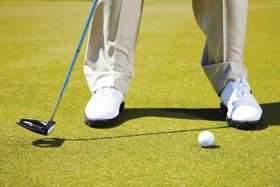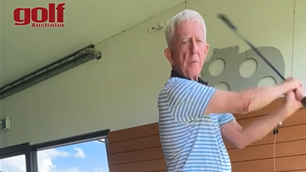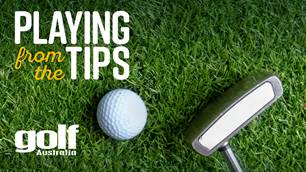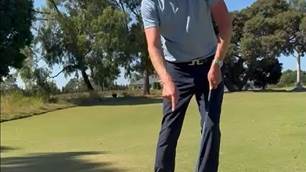This collection of drills from Adrian Fryer will rid this frustrating tendency from your game for good.
LAG PUTTING: Train your brain
We can all stand there and hit three or four balls to the same hole, learning from each effort and unsurprisingly, the last ball usually finishes the closest. But you take very little from this in the long run other than gaining the pace of the greens before you tee off; this routine has little point to it.
 FOOT MARKER: Use your right foot as a measure of how far to swing the putter back to make the ball go a certain distance – on your toe, before it or past it. The key here is to keep the tempo of your stroke the same.
FOOT MARKER: Use your right foot as a measure of how far to swing the putter back to make the ball go a certain distance – on your toe, before it or past it. The key here is to keep the tempo of your stroke the same.Research tells us that the brain predicts and works things out better when the practice is random. Practising to the same spot makes you lazy and doesn't prepare you for the course. Practising to different spots makes your brain work harder and more efficiently.
Set up to a hole 30 feet away and hit four balls to the four points of a compass around the hole – one short, one long, one left and one right. Changing the length and direction on each putt makes your prediction skills better for when you’re on the course. If you hit all your practice putts to the same spot, as soon as you (inevitably!) don’t get that length of putt on the course you aren’t prepared.

SHORT PUTTS: Split the difference
We can all have tendencies to aim left or right of our target – yet believe the putter is square. Then, when we make a good stroke, the ball misses. This occurs because we get lazy in our alignment. This drill makes your brain and eyes work a bit harder and is better at ensuring your putter is actually square.
1. Once you’ve picked the line you want the ball to start on (not necessarily the hole), take your address position, place the putterhead behind the ball and open it enough so it obviously aims right of the target.
2. Then close your putterface so it obviously aims excessively left of the target.
3. Finally, rotate the clubface so it is aligned in between these two directions. This gives you an assurance that your clubface is square and means you won’t second-guess yourself over the ball and make any last-moment compensations during the stroke.
Related Articles

Video Lesson: Hear the swoosh past the ball

Playing From The Tips Ep.106: Texas Open, LIV Miami & LPGA Match Play












